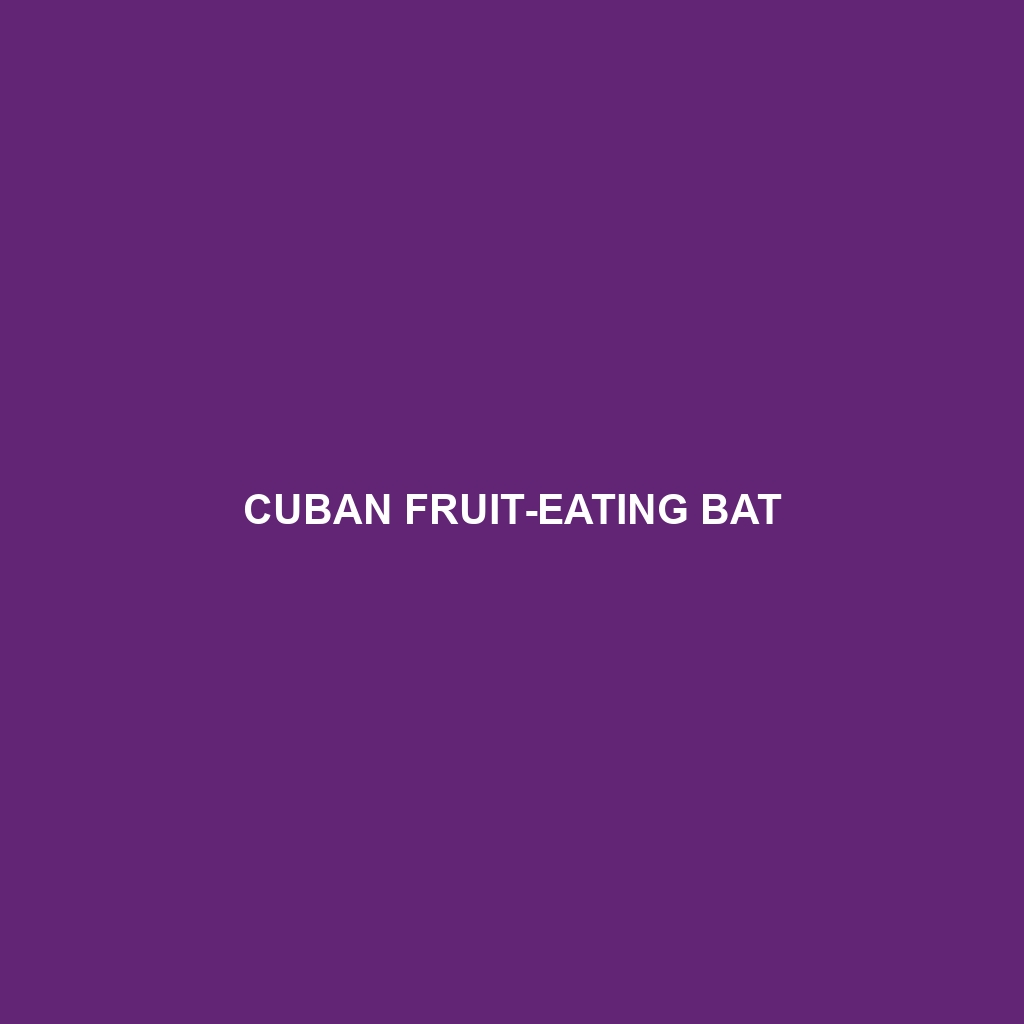Cuban Fruit-eating Bat: A Unique Species
Common Name: Cuban Fruit-eating Bat
Scientific Name: Artibeus jamaicensis
Habitat
The Cuban Fruit-eating Bat is primarily found in the Caribbean islands, especially in Cuba and the surrounding archipelagos. This species inhabits humid tropical forests, secluded caves, and coastal mangroves, thriving in ecosystems where lush vegetation provides ample food sources. The bat prefers areas with significant foliage that offers both shelter and foraging opportunities.
Physical Characteristics
The Cuban Fruit-eating Bat ranges in size from 60 to 80 millimeters in body length, boasting a wingspan of approximately 40 to 45 centimeters. It possesses a distinctive fur coat characterized by a brownish color with lighter underparts, making it blend well with its natural surroundings. One notable feature is its broad, rounded ears that enhance its navigation capabilities in dense environments. The bat’s large, robust teeth are perfectly adapted for its fruit-based diet.
Behavior
Cuban Fruit-eating Bats are predominantly nocturnal, emerging at dusk to forage for food. They exhibit a social nature, often roosting in groups in tree canopies or caves. Their vocalizations play a crucial role in communication, particularly among mating pairs. These bats are skilled fliers, utilizing echolocation to navigate through the dark while avoiding obstacles in their habitat.
Diet
As frugivores, Cuban Fruit-eating Bats primarily consume a variety of fruits, including figs, bananas, and guavas. Their feeding habits not only provide them with essential nutrients but also play a crucial role in seed dispersal, helping to maintain the health of tropical ecosystems. By consuming ripe fruits, they aid in the regeneration of plant species in their habitats.
Reproduction
Cuban Fruit-eating Bats typically breed once a year, with the mating season occurring from late spring to summer. After a gestation period of about three months, females give birth to a single pup. Maternal care is significant, with mothers nursing their young and teaching them essential foraging behaviors as they grow.
Conservation Status
The Cuban Fruit-eating Bat is currently listed as “Vulnerable” according to the IUCN Red List. Habitat destruction due to urbanization and agricultural expansion poses a significant threat to its population. Conservation efforts are critical to preserve their natural habitats and mitigate threats.
Interesting Facts
– Cuban Fruit-eating Bats have been observed to play a vital role in pollination and seed dispersal, thus significantly contributing to their ecosystem.
– They are known to have a unique social structure within their roosts, often engaging in grooming behaviors that strengthen social bonds among individuals.
Role in Ecosystem
Cuban Fruit-eating Bats serve as crucial components of their ecosystems by contributing to seed dispersal and pollination processes. Their feeding habits help maintain plant diversity, ensuring healthy forest ecosystems. Furthermore, they serve as prey for larger predators, thus playing a part in the food web and supporting biodiversity in their environment.
